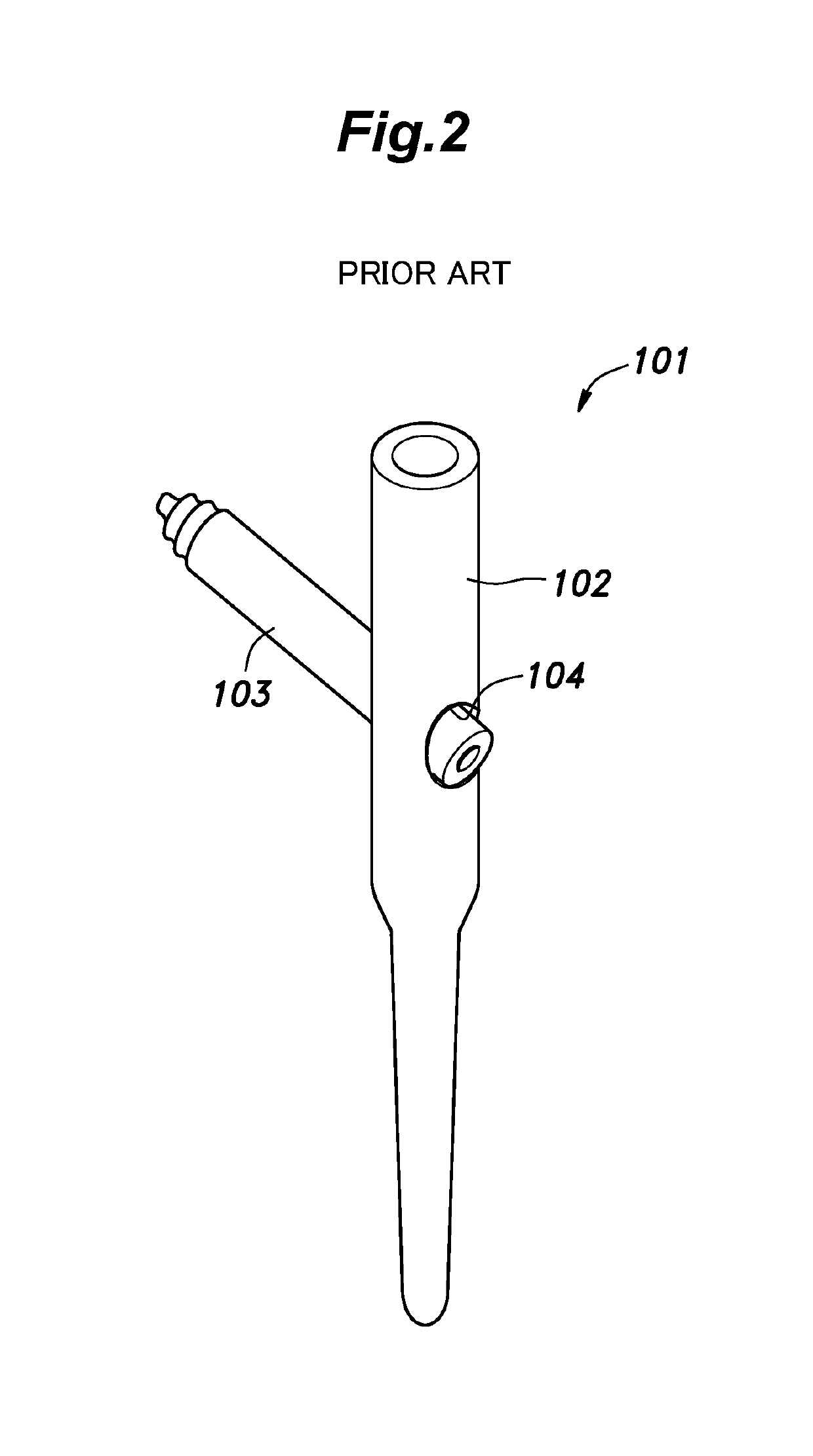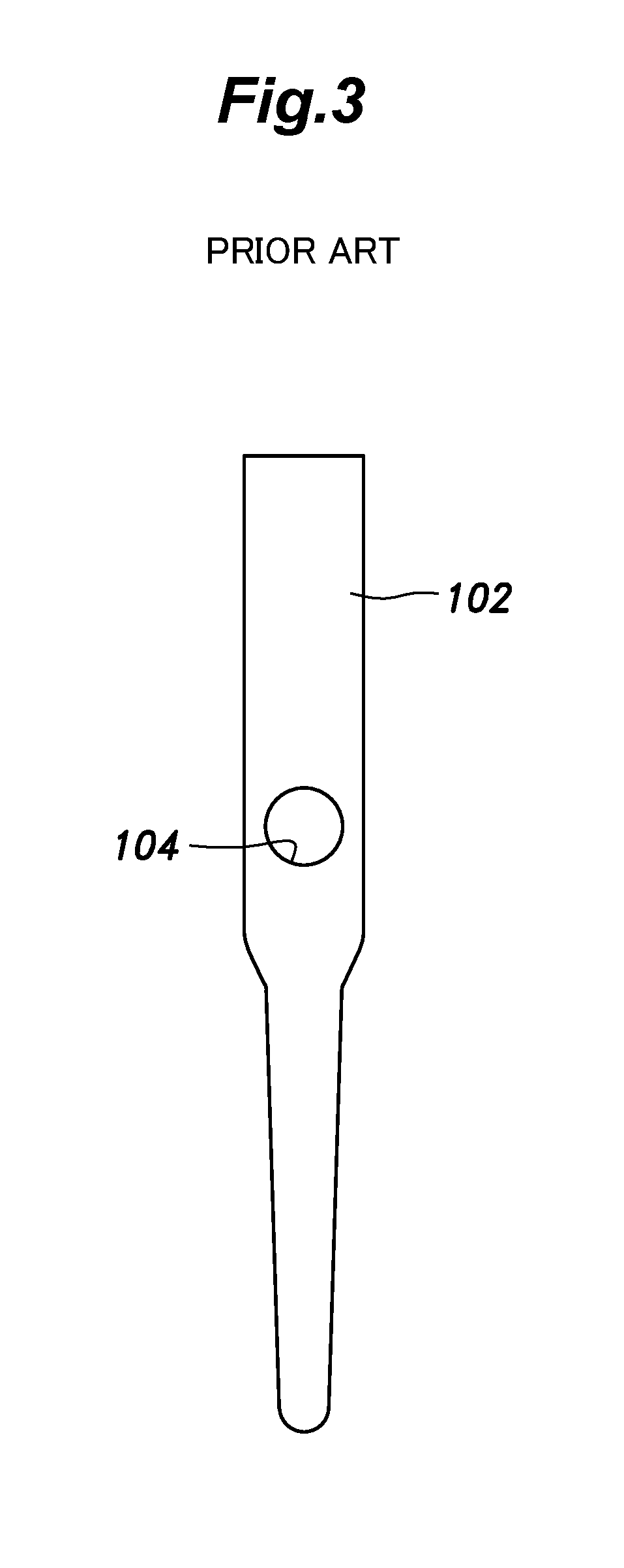Internal fixator for bone fracture
a bone fracture and fixator technology, applied in the field of internal fixators, can solve the problems of internal bone fracture fracture, etc., and achieve the effect of reducing the risk of the femoral head being torn apart by the inner fixing member
- Summary
- Abstract
- Description
- Claims
- Application Information
AI Technical Summary
Benefits of technology
Problems solved by technology
Method used
Image
Examples
first embodiment
[0050]FIGS. 9 and 10 show a bone fracture internal fixator 10 for repairing a femoral neck fracture according to a first embodiment. The bone fracture internal fixator 10 includes an intramedullary nail 11 configured to be placed in the medullary cavity of a femoral shaft 5, and a rod-shaped inner fixing member 12 configured to be connected between a femoral head 4 and the femoral shaft 5.
[0051]As shown in (A) of FIG. 11, the intramedullary nail 11 is formed with a through hole 13 through which the inner fixing member 12 may be passed, and the central axial line 13a of the through hole 13 is laterally offset from the central axial line 11a of the intramedullary nail 11. The through hole 13 is formed in a widened portion 14 of the intramedullary nail 11, and the width of the widened portion 14 as measured in a direction orthogonal to the extending direction of the through hole 13 is greater than the widths of the parts of the intramedullary nail 11 above and below the widened portion...
second embodiment
[0058](A) of FIG. 12 shows a bone fracture internal fixator 30 according to a second embodiment. Similarly to the first embodiment, the bone fracture internal fixator 30 includes an intramedullary nail 31 configured to be placed in the medullary cavity of the femoral shaft 5, and a rod-like inner fixing member 32 configured to be connected between the femoral head 4 and the femoral shaft 5. In particular, the structure of the inner fixing member 32 differs from that of the inner fixing member 12 of the first embodiment. The parts corresponding to those of the first embodiment may be omitted in the following disclosure.
[0059]The intramedullary nail 31 is constructed in a similar manner as the conventional one. More specifically, the central axial line of the through hole 33 crosses the central axial line of the intramedullary nail 31, instead of being offset therefrom.
[0060]The inner fixing member 32 is a linearly extending, rod-like member, and includes a shaft portion34 configured ...
third embodiment
[0065]FIG. 13 shows a bone fracture internal fixator 40 according to a third embodiment. Similarly as in the first and second embodiments, the bone fracture internal fixator 40 includes an intramedullary nail 41 configured to be placed in the medullary cavity of the femoral shaft 5, and a linearly extending, rod-like inner fixing member 42 connecting the femoral head 4 and the femoral shaft 5 to each other. In the bone fracture internal fixator 40 according to the third embodiment, the diameter of the inner fixing member 42 is generally increased, and bone cement, an osteogenic agent, artificial bone or the like can be charged into a part where the inner fixing member 42 is connected to the femoral head 4.
[0066]As shown in FIG. 14, the intramedullary nail 41 is formed with a through hole 43 through which the inner fixing member 42 is to be inserted, and the through hole 43 is formed in a widened portion 44 formed in the intramedullary nail 41. In the widened portion 44, the width in...
PUM
 Login to View More
Login to View More Abstract
Description
Claims
Application Information
 Login to View More
Login to View More - R&D
- Intellectual Property
- Life Sciences
- Materials
- Tech Scout
- Unparalleled Data Quality
- Higher Quality Content
- 60% Fewer Hallucinations
Browse by: Latest US Patents, China's latest patents, Technical Efficacy Thesaurus, Application Domain, Technology Topic, Popular Technical Reports.
© 2025 PatSnap. All rights reserved.Legal|Privacy policy|Modern Slavery Act Transparency Statement|Sitemap|About US| Contact US: help@patsnap.com



